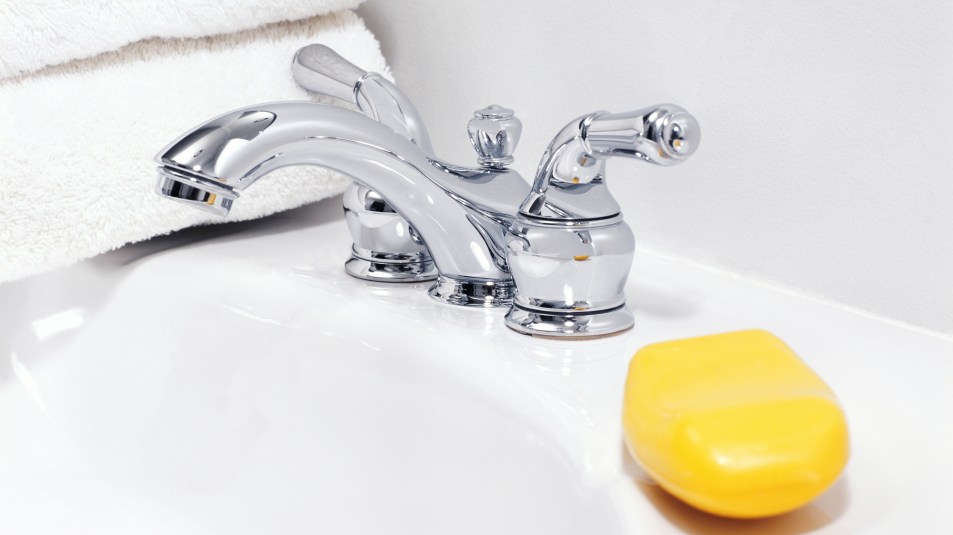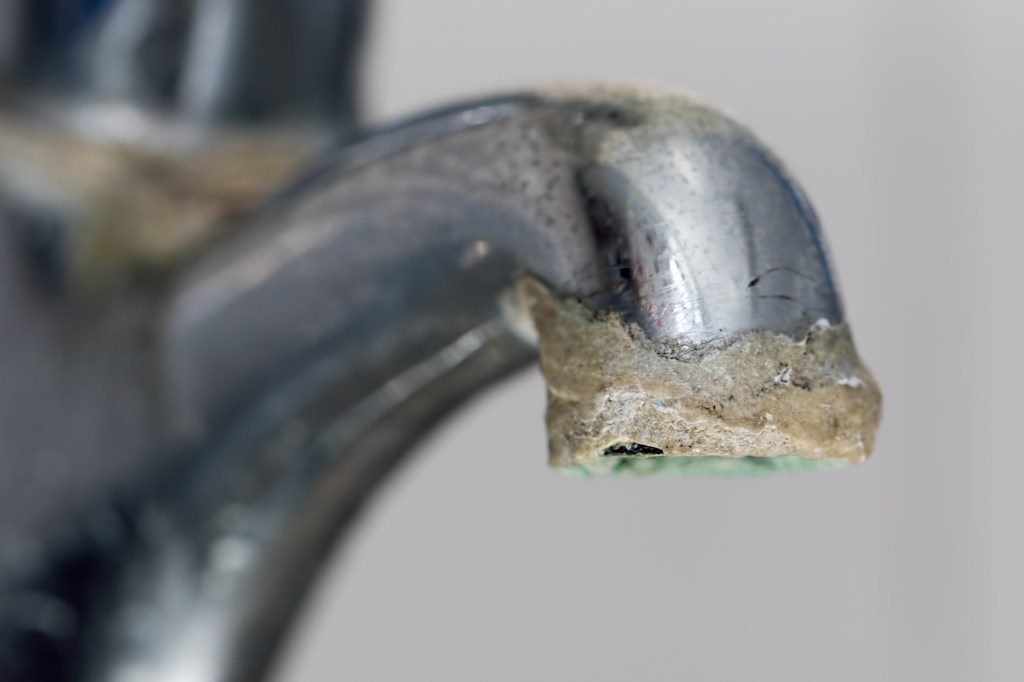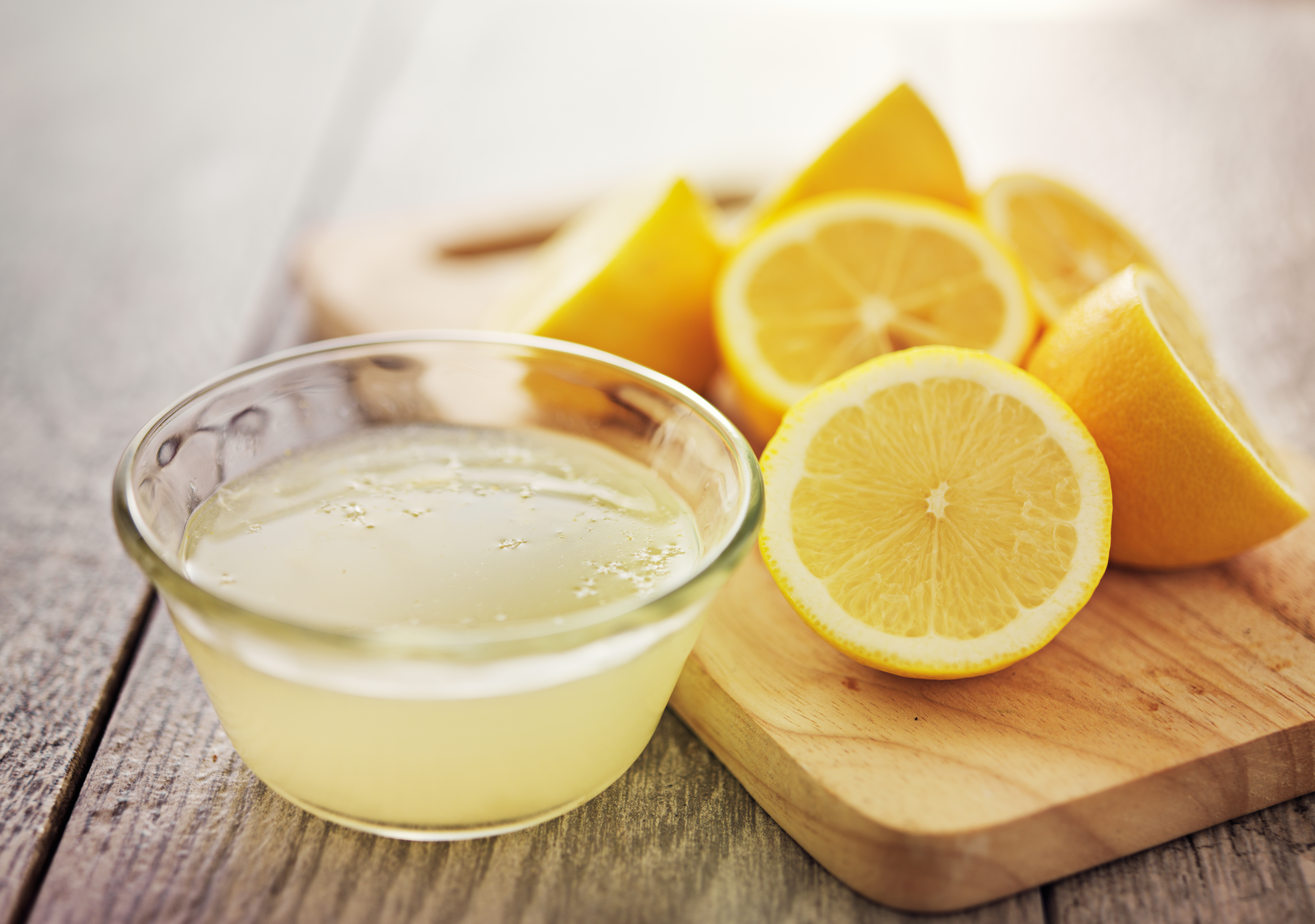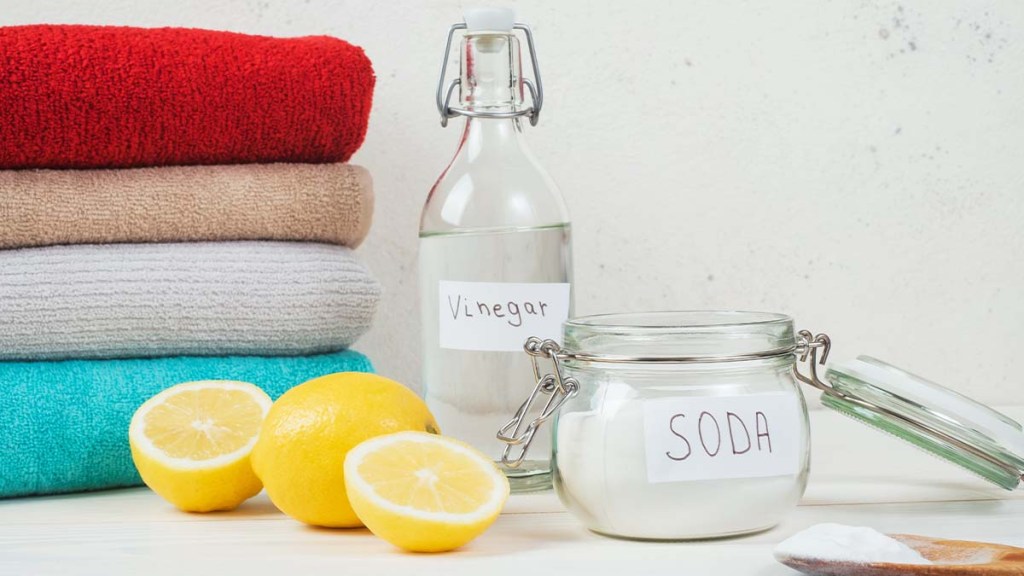Hate Those Chalky Spots That Kill The Shine on Your Faucets? Us Too! *This* Lemon Juice Solution Works Better Than Pricey Cleaners
Best part? Absolutely no elbow grease required

During a quick bathroom cleaning, you notice some hard, chalky-like substance creeping up on your sink, shower and bath faucets. And even though you scrub it, it stays put. The stubborn residue? Limescale — and it can make even the newest of plumbing fixtures look dull and crusty. Thankfully, you can remove limescale easily if you know the secrets. Here, two home pros share how you can skip pricey chemical-laden products and use kitchen staples to remove limescale in no time. Plus, how to ensure your faucets stay shiny and residue free.
What is limescale on faucets?

“While limescale may look like chalk or plaque, it is the result of hard water deposits,” says Robin Wilson, author of Clean Design: Wellness for Your Lifestyle (Buy from Amazon, $22.95).
The hard water creates stains because it contains high levels of a mineral called calcium carbonate. “These mineral deposits build up over time inside older pipes, especially those used to conduct hot water,” explains Wilson. The compound leaves behind spots or crust which you’re most likely to find around the spout of the faucet since this is where the water comes out, but it’s not uncommon to find limescale caked on the other parts of the faucet, as well.
How do you remove limescale from faucet spouts?
Though there are plenty of commercial cleaners marketed towards eliminating limescale, kitchen staples can get the job done just as well — for a fraction of the cost and without the headaches and sinus congestion that can come from working with hardcore cleaners.
All you need is a plastic sandwich bag, a rubber band and some lemon juice!

Wilson’s to do:
- Make a solution of 1 part lemon juice to 4 parts water.
- Add the solution to the sandwich bag and tie it around the sink, bath or shower faucet using the rubber band.
- Let the solution sit for about an hour then remove the bag and wipe off the limescale.
Why it works? The acids in the citrus juice break down the calcium carbonate in the limescale deposits to restore a faucet’s shine.
This YouTube video shows just how to do attach the bag with ease!
How do you remove limescale from other parts of the faucet?
When the spots have made their way up the faucet arms or around pipe openings, a little more elbow grease and some distilled white vinegar and baking soda, are all you need to remove the limescale, shares Mallory Micetich, home expert at Angi.com.

Her how-to:
- Soak a paper towel with white vinegar and lay it over the limescale stains. Let sit for 30 minutes, then remove the paper towel and rinse the area with water to remove any excess vinegar.
- Mix two parts baking soda with one part water to make a paste. Spread the paste on the limescale using a toothbrush or cleaning brush. Let the baking soda paste sit for another 30 minutes and wipe away the residue with a microfiber cloth.
Why it works: Vinegar’s strong acids help break down the deposits without the scratching that can occur when scrubbing hardware or fixtures too harshly. And the mildly abrasive baking soda can then help wipe the remaining residue away.
Once your faucets are limescale-free, keeping them sparkling is as simple as consistently reaching for the right ingredient. “Regular cleaning with distilled white vinegar is the best option on a weekly basis for shower heads and faucets,” adds Wilson. To do: Fill a spray bottle with equal amounts of white vinegar and water, shake to combine, then spray on faucets. Let the solution sit for 15 minutes, then wipe down with a sponge.
How can I prevent limescale buildup?
“The easiest way to prevent limescale buildup is to wipe down surfaces as soon as they get wet,” shares Micetich. “This will prevent buildup from the minerals in the water.” Ensuring hard water doesn’t sit on your faucet for too long is key as this can lead to the visible residue that takes more time and effort to break down later.
Click through for other ways to clean limescale from faucets.













